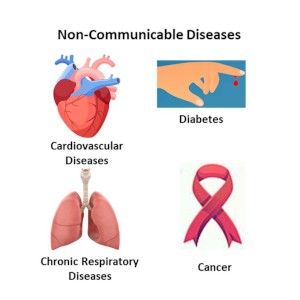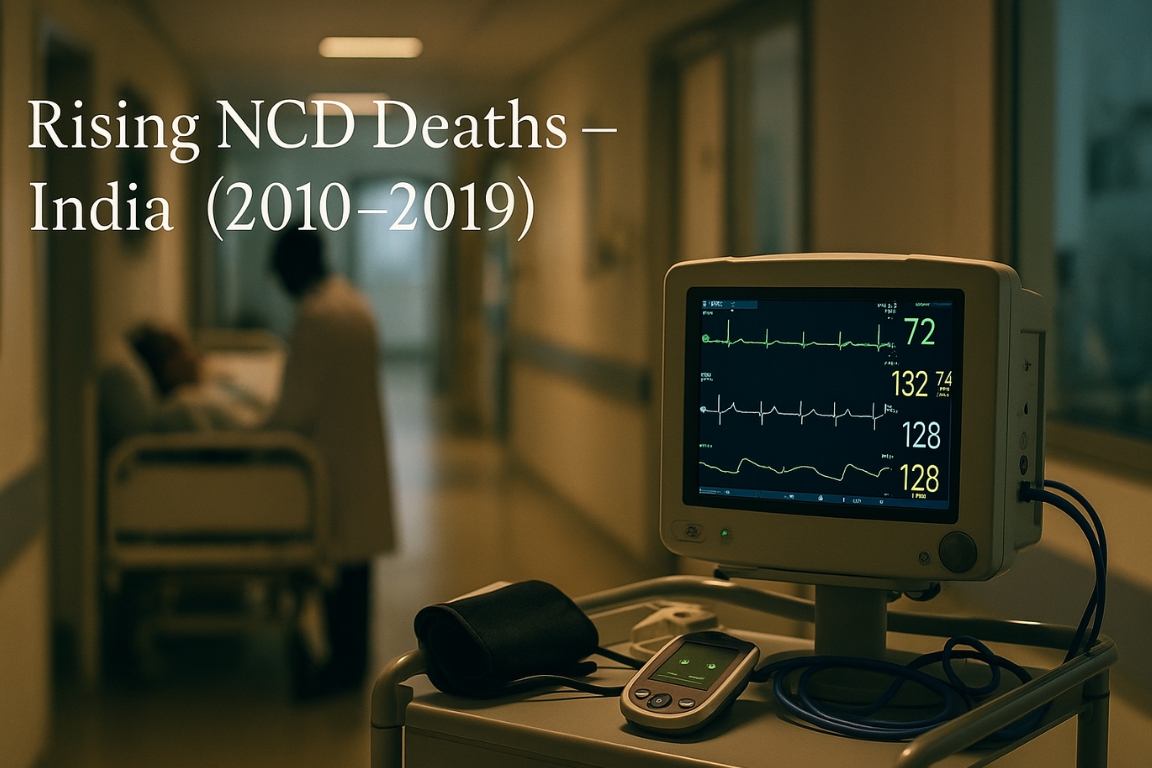A Lancet study (2025) reported that deaths due to non-communicable diseases (NCDs) in India have increased between 2010–2019.
Key Findings of the Study
- Higher mortality risk: From 2010–2019, NCD-related deaths increased by 2.1% in women and 0.1% in men compared to the 2000–2010 period.
- Probability of dying from NCDs before 80 years of age:
- Women – 46.7% (2001), 46.6% (2010), 48.7% (2019).
- Men – 56% (2001), 57.8% (2010), 57.9% (2019).
- The figures show a slow but steady rise in the NCD burden, especially among women.

What are Non-Communicable Diseases (NCDs)?
- Definition: Chronic illnesses that are not spread from one person to another.
- Examples: Heart disease, stroke, cancer, diabetes, and chronic respiratory diseases.
Causes of Rising NCDs in India
- Lifestyle factors: Poor diet, low physical activity, tobacco and alcohol consumption.
- Environmental issues: Urbanization, air pollution (indoor and outdoor), and ageing population.
- Social and economic conditions: Poverty, chronic stress, and changing food habits.
National Initiatives to Tackle NCDs
- National Programme for Prevention and Control of Non-Communicable Diseases (NP-NCD): Started in 2010, expanded in 2023; focuses on screening, early diagnosis, treatment, and referral for major NCDs.
- 75/25 Initiative: Launched in 2023 to provide standardized care to 75 million people with hypertension and diabetes by 2025.
- Ayushman Bharat PM-JAY: Offers financial coverage for tertiary treatment of NCDs and upgrades PHCs into Ayushman Arogya Mandirs for preventive care.
- Eat Right India Movement: Led by FSSAI; promotes safe, nutritious, and balanced diets and reduces harmful ingredients like trans fats.
- Fit India Movement: Encourages regular exercise, healthy lifestyle choices, and physical activity to prevent NCDs.
Way Forward
- Rising NCD deaths highlight a serious public health challenge for India.
- Strengthening preventive healthcare, lifestyle awareness, and affordable treatment will be crucial.
- Collaboration between government, civil society, and individuals is essential to reduce the NCD burden and achieve Universal Health Coverage (UHC).
Conclusion:
This issue shows the urgent need to shift India’s health policy from disease-treatment to disease-prevention and lifestyle improvement.





